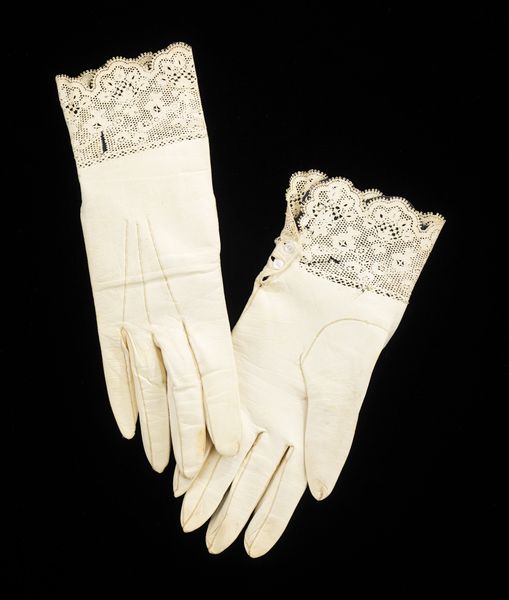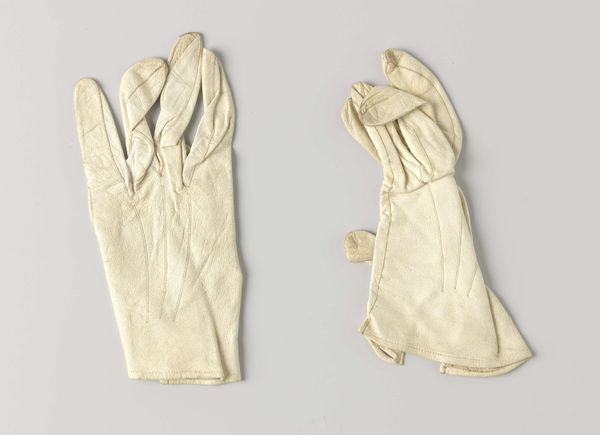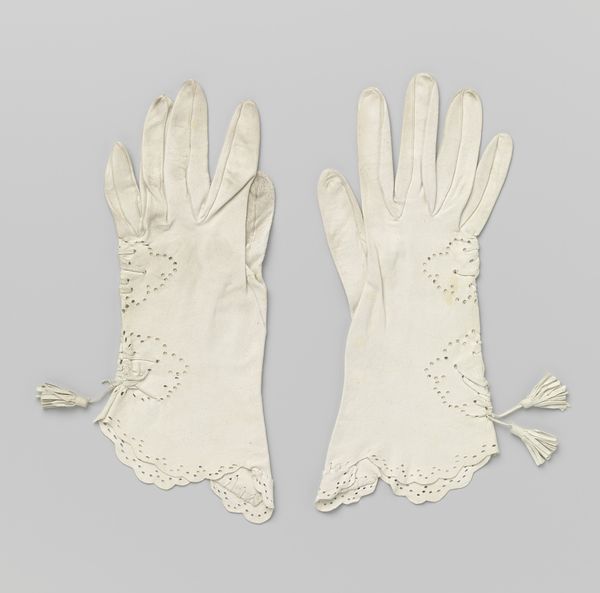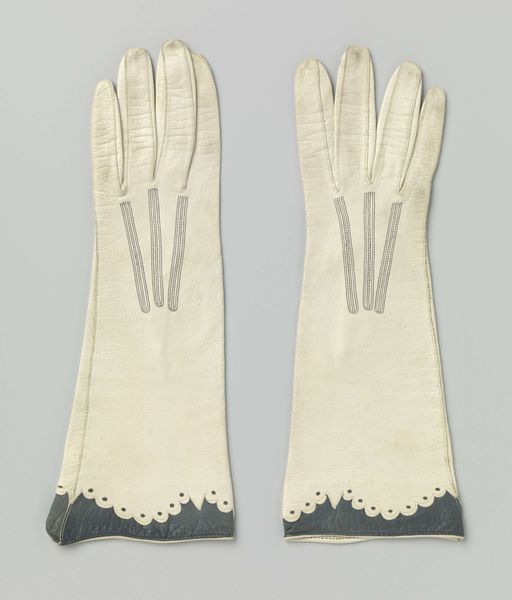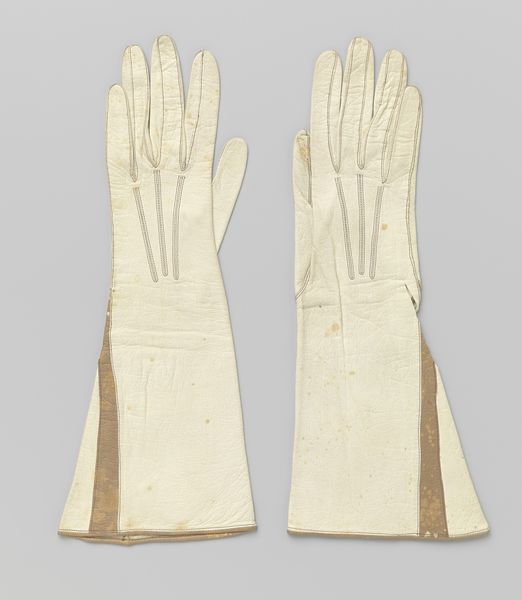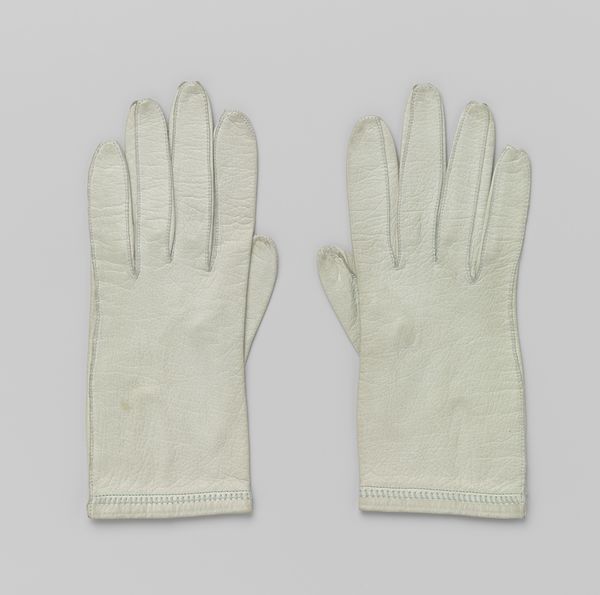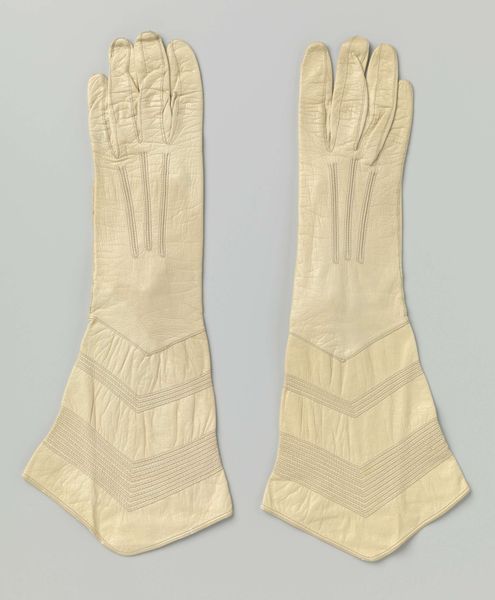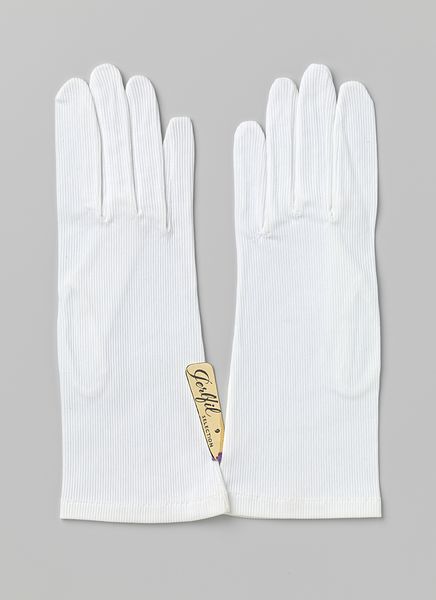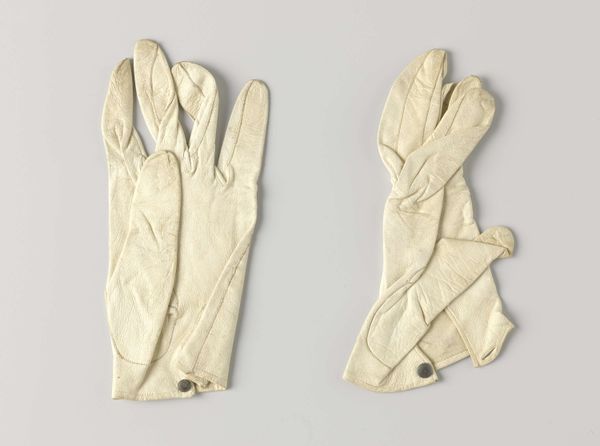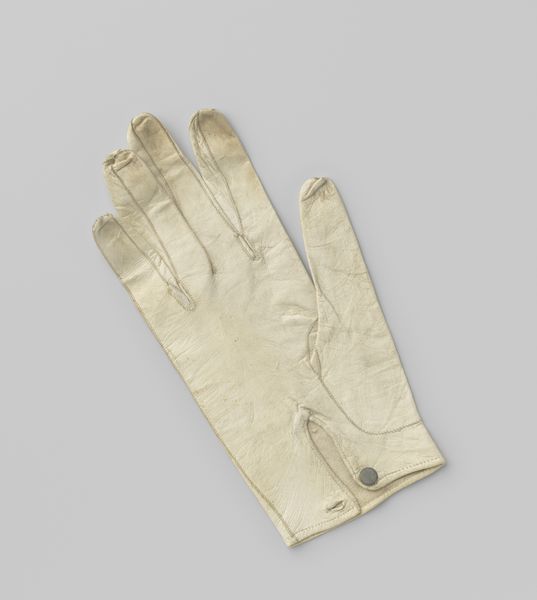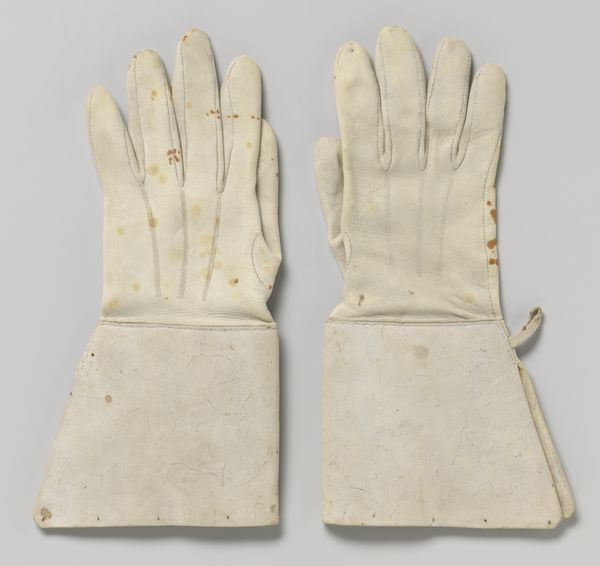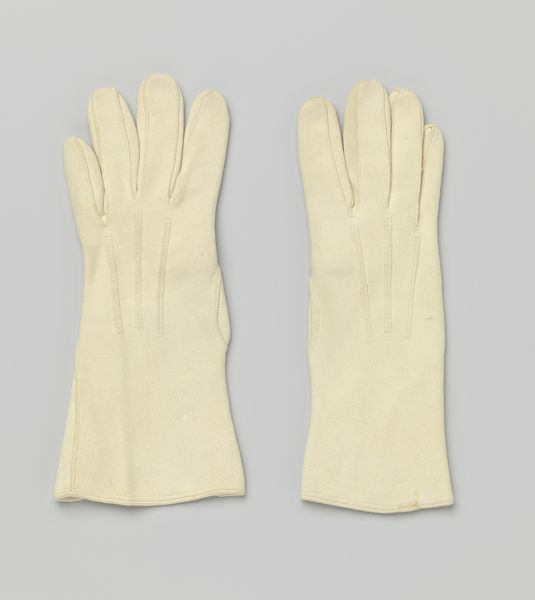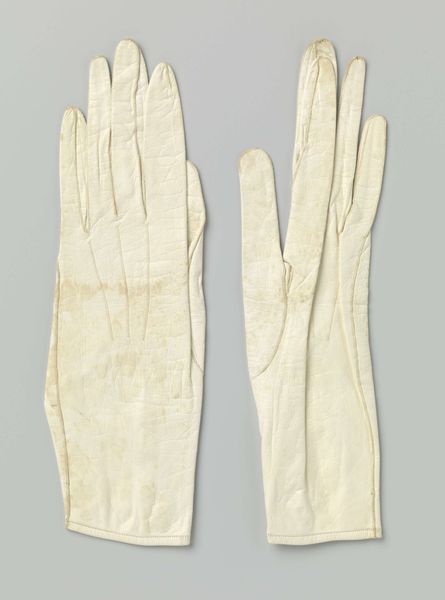
Handschoen van wit wasleer, met geschulpte kappen met goudkant, banden met eikels en zijde, geborduurd met veelkleurige zijde, gouddraad- en canetille en vergulde pailletten c. 1622
0:00
0:00
textile
#
baroque
#
textile
#
hand-embroidered
#
historical fashion
#
decorative-art
Dimensions: length 24 cm, length 26 cm, width 13 cm
Copyright: Rijks Museum: Open Domain
These gloves are made of white leather and are embroidered with colorful silk, gold thread and gilded sequins. Without knowing the exact date or place of production, we can still appreciate these gloves as objects that reflect the social hierarchies of their time. Gloves like these would have been worn by members of the upper class, signifying wealth and status. The elaborate embroidery indicates that the gloves were intended to be seen, to flaunt the wearer's privilege. The fashion for gloves also intersected with social rituals around courtship and display. Gloves were regularly exchanged as gifts among the upper classes. These practices created a space for the exchange of political ideas within the courtly setting. To fully understand the role of these gloves, we could look at fashion plates, etiquette manuals, and inventories of wealthy households from the period. By understanding such objects we can see how clothing became a means to perform a certain role and embody wider social and political values.
Comments
No comments
Be the first to comment and join the conversation on the ultimate creative platform.
